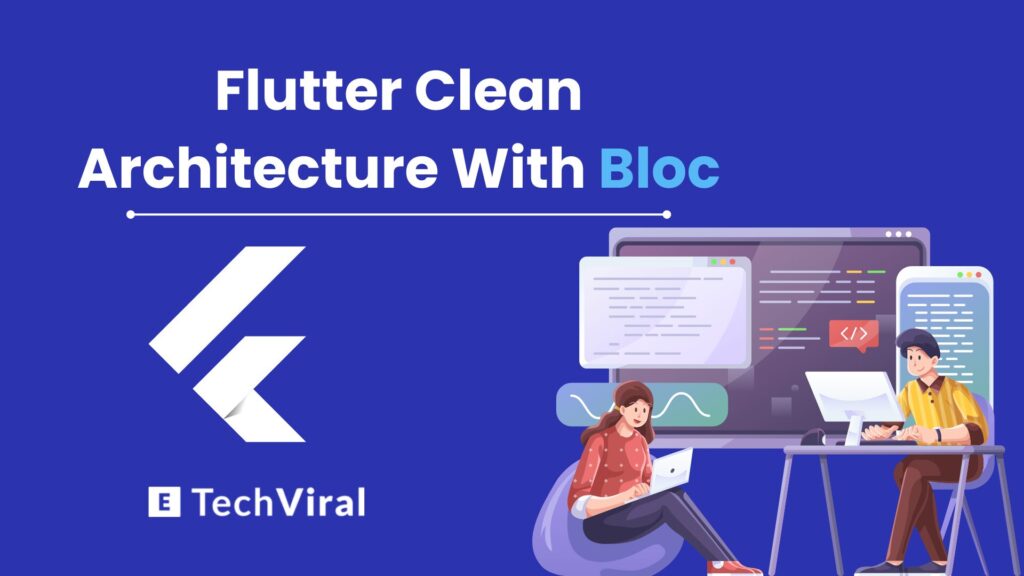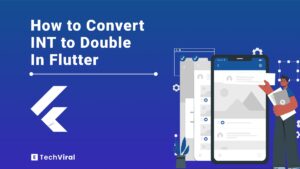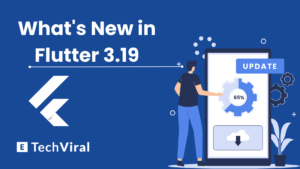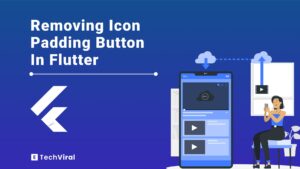Creating apps in Flutter can be tricky, like finding your way through a maze. But, guess what? There’s something called Bloc Clean Architecture in flutter that makes it a whole lot easier. Think of it as a map that guides you to build better apps.
It mixes two cool ideas – Clean Architecture and the Bloc pattern – to help you make apps that work well and can grow without getting messy. Why is this important? In Flutter, using the right plan when you build an app makes everything better. It’s like building a house with a good foundation.
This guide will show you how Bloc Clean Architecture makes building Flutter apps simpler and better.
Understanding the Basics of Flutter clean architecture with Bloc can make developing apps much easier and more streamlined. Here’s a simpler look at what Bloc Architecture means and why it could be a great choice for your Flutter projects.
Key Principles of Bloc Clean Architecture
Bloc Architecture rests on several key principles that enhance your app’s state management:
- Separation of Concerns: Imagine your app as a puzzle. Bloc helps by breaking this puzzle into smaller, easier-to-manage pieces. This means you can focus on one area of your app at a time without worrying about the others.
- Predictability: Bloc makes your app’s behavior easier to predict. It does this by managing how data flows around your app in a clear, orderly way. When you tell Bloc what you want to happen, it ensures the app responds just as expected.
- Reusability: With Bloc, you can take pieces of code you’ve already written and use them in different parts of your app. It’s like having a Lego set where you can build different things without having to get new pieces every time.
- Testability: Testing your app with Bloc is simpler. Because Bloc keeps your app’s logic separate from its appearance, you can test how your app works without getting tangled up in how it looks.
Streams and Events in Bloc
To really get Bloc, it’s important to understand streams and events:
- Streams: Imagine streams as pathways that data travels along within your app. These streams move information from one place to another. Bloc uses streams to manage how your app’s state changes over time. For instance, a stream might carry updates about what a user does, like clicking a button.
- Events: Events are like notifications that something has occurred in your app. When a user does something (e.g., hits a button), that action sends an event down a stream. Bloc picks up on these events and updates the app’s state based on what happened.
Putting it simply, Bloc watches for events to understand user actions. Then, it uses streams to update the state of the app accordingly. This approach lets your app respond to changes smoothly and predictably, making for a better user experience.
The Dependency Rule and Independence in Clean Architecture
The Dependency Rule and Independence in Clean Architecture play crucial roles in building robust Flutter applications. The Dependency Rule states that source code dependencies can only point inwards, meaning that the inner layers of the architecture (like business logic) are not dependent on the outer layers (such as the user interface or databases).
This setup ensures independence from external factors, allowing the core functionality of the app to remain unaffected by changes in external libraries, databases, or user interfaces. Essentially, it promotes a design where the most important parts of your application are protected from volatility in external elements, ensuring the system is easier to maintain and update.
Benefits of Using Clean Architecture in Flutter
The benefits of using Clean Architecture in Flutter projects are numerous and impactful. Firstly, it significantly enhances the scalability of applications. As projects grow, Clean Architecture makes it easier to add new features or adjust existing ones without disrupting the core logic of the application.
This architecture also improves the testability of the code. By isolating the business logic from the user interface and external dependencies, You can write and run tests more efficiently, ensuring that each part of the application performs as expected.
Furthermore, Clean Architecture facilitates a more collaborative and focused development environment. You can work on different layers of the application simultaneously without stepping on each other’s toes, speeding up the development process while maintaining high-quality standards.
Lastly, adopting and implementing Clean Architecture leads to more readable and understandable code, making it easier for new team members to get up to speed and contribute to the project effectively.
Implementing Bloc within Clean Architecture
Implementing Bloc within Clean Architecture involves strategic integration, particularly within the application layer, and ensures independence between the presentation and application layers. This approach enhances the maintainability and scalability of Flutter applications. Here’s how it unfolds:
Integrating Bloc in the Application Layer
The application layer acts as the intermediary between the user interface (presentation layer) and the core business logic (domain layer). Integrating Bloc here involves setting up Bloc as the primary method for state management and event handling. By doing so, the application layer subscribes to the domain layer for business logic and serves processed data to the presentation layer.
This is achieved through the creation of Bloc components (Cubits or Blocs), which listen to user inputs (events) and communicate with the domain layer to fetch or update data. The results are then converted into states and provided back to the presentation layer to update the UI accordingly.
This setup allows for a clean separation of concerns. The application layer, powered by Bloc, becomes a robust conduit that manages the flow of data and state transitions within the app, keeping the business logic pure and unaffected by UI changes.
Achieving Independence between Presentation and Application Layers
The key to achieving independence between the presentation and application layers lies in the abstraction of functionalities and the use of interfaces or abstract classes. Bloc plays a pivotal role here by acting as a buffer that absorbs the complexities of state management.
By implementing Bloc, You can ensure that the presentation layer remains solely responsible for displaying UI elements and capturing user inputs, with no direct knowledge of the underlying business logic. Conversely, the application layer focuses on processing these inputs, leveraging the domain layer’s functionalities, and deciding the state of the UI. This separation is crucial for building scalable and maintainable applications, as it allows for changes in the UI or business logic without impacting the other.
Moreover, this independence facilitates easier testing and debugging. you can test the business logic without worrying about the UI and vice versa. It also supports modular development practices, where different teams can work on separate layers simultaneously, ensuring efficiency and reducing development time.
You might also enjoy: Clean Architecture with Cubit in Flutter
Breakdown of Clean Bloc Architecture Layers
The Clean Bloc Architecture divides a Flutter application into distinct layers, each with its specific responsibilities. This separation enhances maintainability, scalability, and testability. Here’s a detailed breakdown of how each layer functions within this architecture:
Presentation Layer: UI Components and Navigation
The Presentation Layer is where all user interface (UI) components, screens, and navigation logic reside. It’s responsible for how the application looks and feels to the end-user. In Clean Bloc Architecture, the presentation layer communicates with the application layer through Bloc components to manage the state of the UI based on user interactions or data changes. This layer is entirely focused on presenting data in a user-friendly manner and capturing user inputs, without having to deal with the complexities of business logic or data persistence.
Application Layer: Bloc’s Role and Functionality
The Application Layer acts as the bridge between the presentation layer and the deeper layers of the architecture. Bloc’s role here is crucial; it manages the application’s state and business logic execution in response to events triggered by the UI. The Bloc components (either Cubits or Blocs) listen for these events, process them with the help of use cases from the domain layer, and emit new states that the presentation layer reacts to. This layer ensures that the business logic is executed correctly and that the application reacts appropriately to user inputs and other events.
Domain Layer: Abstraction and Validation
The Domain Layer is at the heart of the application, containing the core business logic, entities, and use cases. It abstracts and validates the business rules of the application, ensuring that all operations adhere to the predefined logic. This layer is independent of any external influences like databases or APIs, allowing for a clean separation of concerns. The use cases in the domain layer orchestrate the flow of data to and from the entities and the outer layers, serving as clear entry points for the application layer to interact with the business logic.
Infrastructure Layer: Database and API Integration
Finally, the Infrastructure Layer handles all external communications and data persistence, such as API calls to web services and interactions with local databases. This layer implements interfaces defined in the domain layer, providing concrete implementations for data retrieval and storage. It’s where the details of how data is fetched from a remote server or stored locally are encapsulated, allowing the rest of the application to remain agnostic of these details.
Advantages of Using Flutter clean Architecture With Bloc
Using Bloc Clean Architecture in Flutter offers a myriad of advantages, particularly in terms of maintainability, scalability, testability, and the clarity of separation of concerns. Here’s a deeper look into how these benefits manifest:
Maintainability
With Bloc Clean Architecture, the application’s structure is organized into distinct layers, each with a specific role. This separation makes it easier for you to understand the codebase, as they can focus on one layer at a time without being overwhelmed by the entire application’s complexity. Updates, bug fixes, or changes in business logic can be made in isolated parts of the system without affecting the entire application. This modularity ensures that modifications are less risky and can be implemented more efficiently.
Scalability
As applications grow, adding new features or scaling existing ones can become increasingly complex. Bloc Clean Architecture addresses this challenge head-on by providing a scalable framework. The clear separation of responsibilities allows for easy addition of new functionalities without disrupting the core logic of the application. Each layer can evolve independently, accommodating growth without compromising the app’s stability or performance. This makes it easier to expand the application over time, whether it involves adding new user interfaces, expanding the business logic, or integrating with additional external services.
Testability
One of the standout advantages of Bloc Clean Architecture is the ease with which applications can be tested. Since the business logic is decoupled from the UI and external dependencies, unit tests can be written and executed for individual components or layers without requiring the entire application to be running. This leads to more reliable tests since You can focus on testing the logic and behavior of individual parts in isolation. Furthermore, the use of Bloc for state management simplifies the process of mocking dependencies and simulating user interactions, enhancing the thoroughness and effectiveness of tests.
Separation of Concerns and Clear Layer Boundaries
The core principle underpinning Bloc Clean Architecture is the separation of concerns, achieved through its layered approach. Each layer has a clear, defined responsibility, reducing the likelihood of tightly coupled code. This clear demarcation enhances the understanding of the application structure, making it easier for new developers to onboard and contribute to the project. It also facilitates parallel development, where multiple teams can work on different layers simultaneously without causing conflicts. This separation further allows for the flexibility to replace or update parts of the system with minimal impact on others, ensuring the app remains adaptable to new technologies or methodologies.
Conclusion
The adoption of Bloc Clean Architecture in Flutter development marks a significant leap towards building more robust, maintainable, and scalable applications. By emphasizing separation of concerns, clear layer boundaries, and efficient state management, it sets a high standard for app development practices. Looking ahead, the evolution of architecture patterns in Flutter is likely to focus on enhancing your productivity, app performance, and adaptability to emerging technologies. As the Flutter ecosystem continues to grow, embracing such comprehensive architectural frameworks will be crucial for you aiming to craft sophisticated applications that stand the test of time.
FAQ’s
What is BLoC Clean Architecture?
BLoC Clean Architecture is a design pattern used in Flutter development that combines the Business Logic Component (BLoC) with Clean Architecture principles. This approach structures the app into distinct layers, separating the UI from business logic and data sources, to enhance maintainability, scalability, and testability. It emphasizes a clear separation of concerns, allow you to manage state and navigate complex app features more efficiently.
What is the Clean Architecture pattern in Flutter?
The Clean Architecture pattern in Flutter is a strategic design that organizes the app into layers with distinct responsibilities. It ensures that the app’s business logic, data sources, and presentation details are independent of each other. This separation allows for easier testing, maintenance, and scalability of applications, by ensuring that changes in one layer do not directly impact others.
What is the BLoC architecture pattern in Flutter?
The BLoC (Business Logic Component) architecture pattern in Flutter is a methodology for managing app state and business logic. It uses streams and sinks to separate the presentation layer from business logic, enabling reactive programming practices. By defining clear rules for how data flows through the app, BLoC helps in creating scalable and easily testable Flutter applications.
What is the BLoC method in Flutter?
The BLoC method in Flutter is a state management approach that involves using Business Logic Components to handle the business logic of the app. It operates on the principles of reactive programming, utilizing streams for data flow and events for user actions. This method is designed to provide a clean separation between the app’s UI and its core logic, facilitating easier debugging, testing, and maintenance.
Why do we use Bloc in Flutter?
We use Bloc in Flutter to manage app state and organize business logic efficiently. Bloc simplifies the development of complex apps by providing a structured way to handle events and state changes, ensuring the UI remains in sync with the underlying data. It helps in creating more robust, maintainable, and scalable applications by promoting a clear separation of concerns and enabling reactive programming practices.
What is the difference between Bloc and MVVM in Flutter architecture?
The difference between Bloc and MVVM (Model-View-ViewModel) in Flutter architecture lies in their approach to state management and separation of concerns. Bloc is a pattern specifically designed for Flutter that uses streams and sinks to manage state and facilitate communication between the UI and business logic. MVVM, on the other hand, is a broader architectural pattern that separates the UI (View) from the business logic (ViewModel), with the model representing the data. While both aim to separate concerns, Bloc emphasizes reactive programming and stream-based communication, whereas MVVM focuses on data binding and command patterns.











